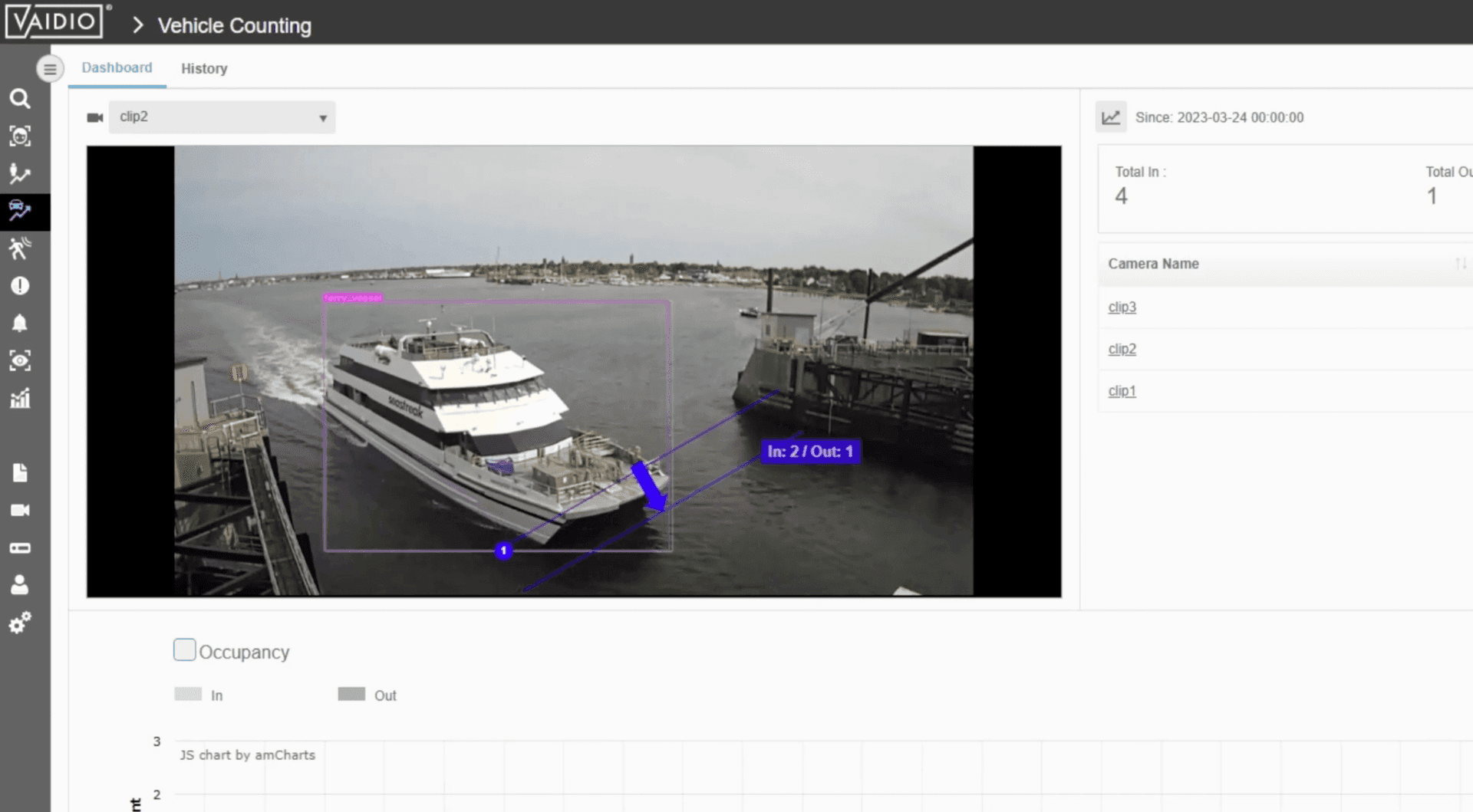


Our digital solutions aim to reduce risk, improve safety, enhance performance, and increase revenue for the New Bedford Port Authority.
New Bedford, Massachusetts is quickly becoming a hub for offshore wind projects, with wind turbine components being built and transported offshore from New Bedford’s Marine Commerce Terminal. At the same time, the Port of New Bedford is home to more than 500 commercial scallopers and fishermen, making it the leading commercial fishing port in the United States.
To assess the potential impacts of the offshore wind industry to vessel and goods movement within the port, the New Bedford Port Authority (NBPA) asked AECOM to study the local fisheries industry and its port usage patterns. We used Automatic Identification System (AIS) tag analytics and camera video artificial intelligence (AI) and machine learning (ML) to detect, identify, and provide vessel counts and movement data for the study.
Laying the groundwork with a successful POC
To study and predict Port of New Bedford usage patterns, we needed a digital solution that features real-time data collection, historical data capture review, and AIS tag analytics to predict port arrival times. We built a proof of concept (POC) to develop and test our AI/ML-based solution in the port environment. We used existing cameras with asset and marine vessel fields of view to detect different sizes and types of marine vessels. AIS provided vessel tracking data and camera video AI and ML helped us better understand vessel usage patterns in three ways:
- Marine vessel detection, considering fidelity of data output while reducing false positives in challenging outdoor applications specific to the marine environment,
- Marine vessel classification, to provide more granular information about the types of vessels that operate within the area of interest, and
- Identification of specific marine vessels, using technology to recognize the presence of and log the vessel official numbers (VONs).
By connecting the logged VONs to vessel identification databases, we were able to gather additional information on the vessels themselves, including port of call, ownership, and physical characteristics.
Integrating customized solutions to meet NBPA’s needs
Our POC technology holds significant potential for safety, security, and revenue enhancement as well. The NBPA is interested in using camera video AI and ML to improve vessel visibility and safety within the harbor. Using technologies proven during the POC, we’re able to capture the operational environment of all moving and static objects to help vessels transit when visibility is limited and automatically log vessel arrival and departure data.
With integrated vessel management systems, the technology could be used to monitor and manage traffic, create natural and virtual check points and zones within the harbor, and inform the harbormaster’s management activities. By integrating data and technology into the NBPA’s existing processes we could also facilitate wharfage fee collection and enhance revenue. Upon completion of the successful POC, we provided conceptual-level engineering services to identify camera type, layout, natural port geographic features that could be leveraged, geofencing for tracking and camera handoff, and equipment quantities needed to deploy the POC use cases at scale at the Port of New Bedford.

Providing innovation that drives growth
Our successful POC has uncovered a digital solution for NBPA that promotes better tracking and monitoring of vessels, greater revenue collection, expedited deliveries, and a safer and more secure environment for port employees and users. We used the usage data collected as part of the POC along with our analysis of existing rate structures and benchmark rates from other ports to develop a future rate strategy that will foster both fisheries and offshore wind businesses. Information gained during the POC stage has laid the foundation for impactful use cases that could improve NBPA’s bottom line while it continues to serve these industries.